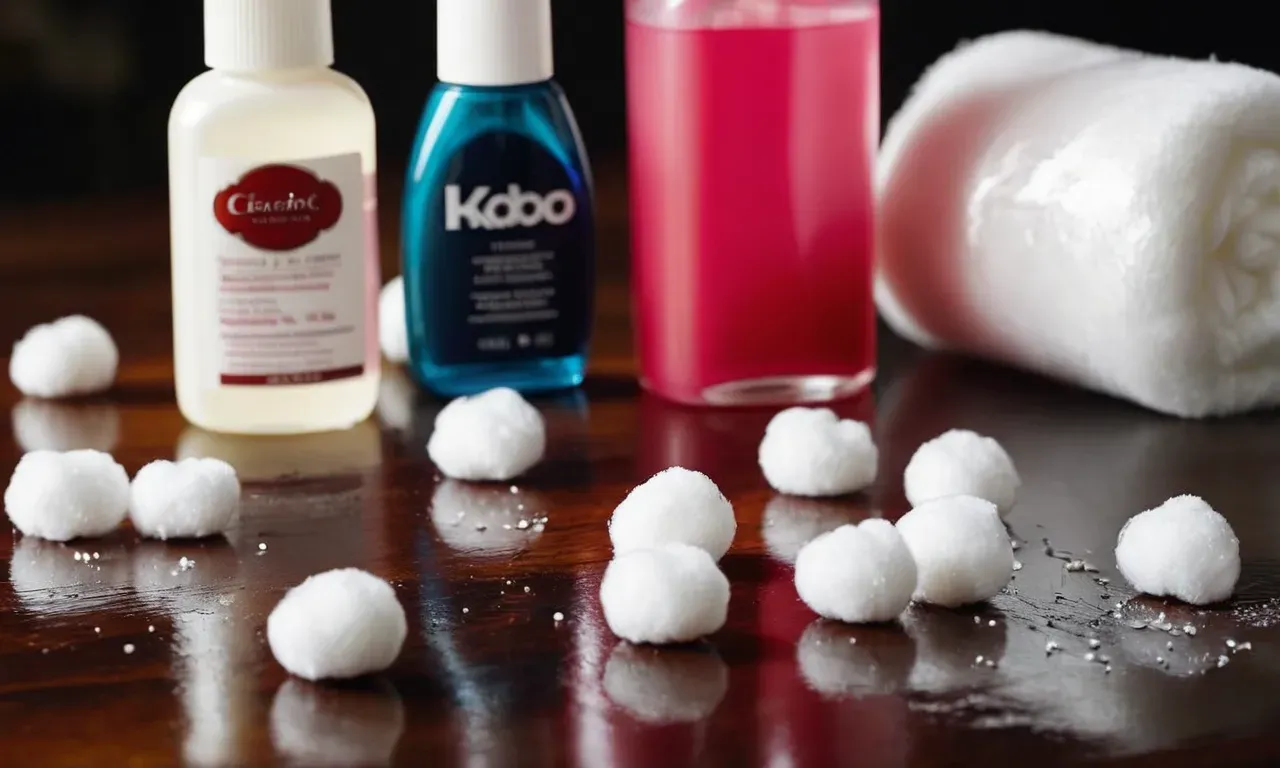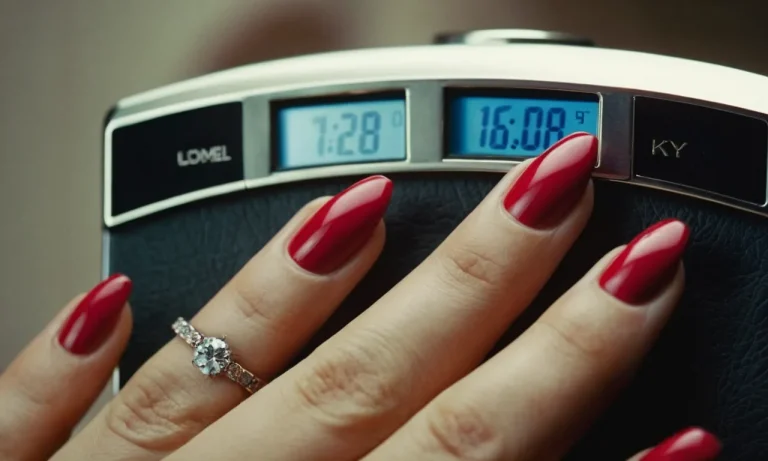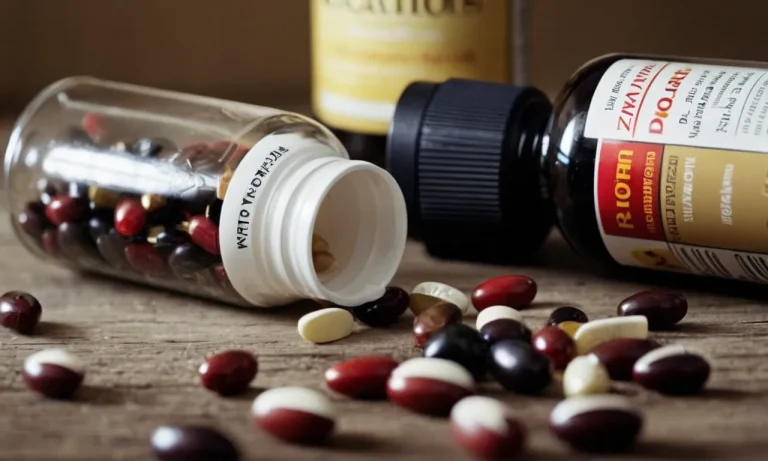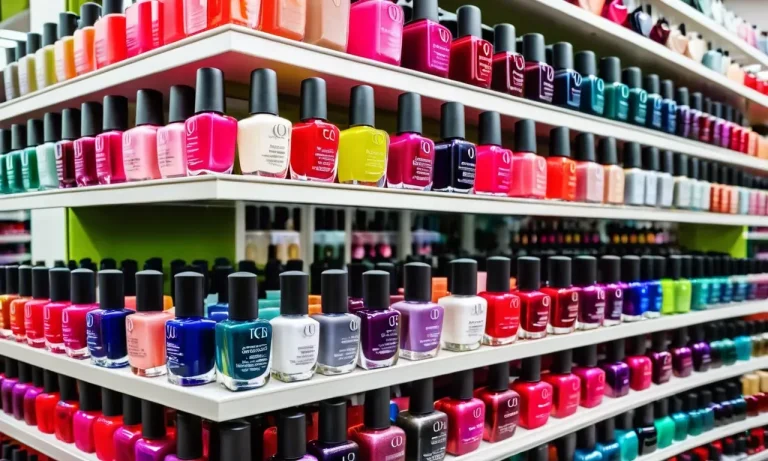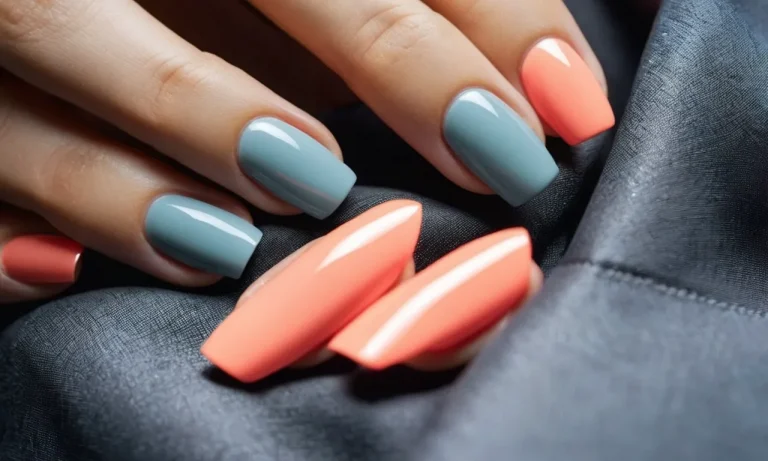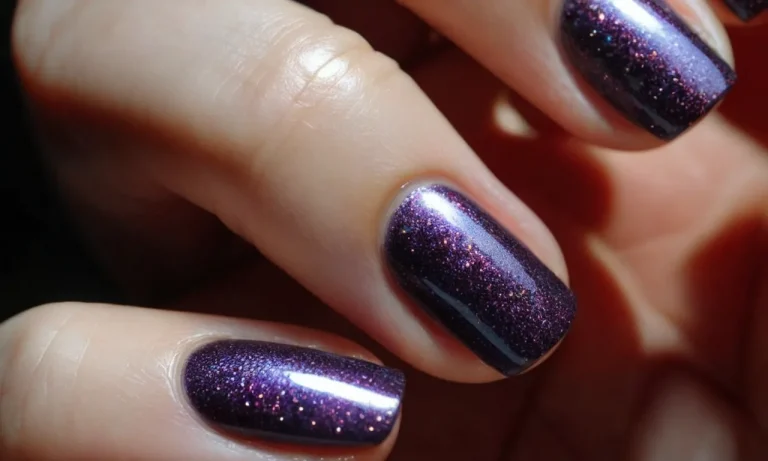How To Get Nail Glue Off Counters: A Step-By-Step Guide
Decorating your nails at home can be a fun DIY project. But accidents happen, and before you know it, you’ve spilled nail glue on your countertops. Don’t panic – removing nail glue from countertops is possible with the right techniques.
If you’re short on time, here’s a quick answer: use acetone-based nail polish remover and a plastic scraper to gently lift the dried glue. Keep reading for a more thorough, step-by-step solution.
Getting nail glue off your counters doesn’t have to be a painstaking process. With some inexpensive household products and a little elbow grease, you can safely remove dried glue without damaging your countertops.
This comprehensive guide will walk you through everything you need to know, from preparing your workspace to tackling stuck-on glue residue.
Assess the Situation and Prepare Your Workspace
Determine the extent of the spill
Take a close look at the nail glue spill and assess how large of an area it covers. Is it just a small dot or smear, or does it cover a substantial section of the countertop? This will determine how much effort and supplies you’ll need for cleanup.
It’s important to act quickly before the glue dries and gets even harder to remove.
Clear your counters
First, remove everything from the affected countertop – dishes, appliances, decor, etc. Having a clear workspace will make the cleanup process easier. You don’t want to accidentally get nail glue on other items. Be thorough and check drawers or shelves under the counters too. Better safe than sorry!
Gather your supplies
You’ll want to have all your cleanup tools ready before tackling the nail glue. Here’s a list of handy items to gather:
- Paper towels or rags
- Goo Gone or acetone nail polish remover – avoid acetone on granite or marble
- Plastic scraper or old credit card – for scraping off glue
- Warm, soapy water – helps dissolve glue
- Magic eraser – great for scrubbing off residue
It’s awesome 👍 to already have these on hand before discovering a nail glue spill. Preparation is 🔑 for an easy, stress-free removal!
Remove Excess Glue
Scrape off thick globules
If there are any thick globs of nail glue left on the counter, use a plastic scraper or an old credit card to gently scrape them off. Apply firm yet gentle pressure as you scrape to avoid scratching or damaging the counter surface. This will remove the bulk of the excess glue quickly and easily.
You can also try using a stiff brush or toothbrush to loosen and brush away dried glue globs. The bristles will help break up and sweep away the stubborn dried glue.
Use oil to soften glue
Once you’ve removed any thick chunks, apply a few drops of olive, coconut or vegetable oil directly onto the remaining glue stain. Let it sit for 2-3 minutes. This will help soften and break down the glue so it’s easier to wipe away.
Dish soap also works to dissolve nail glue. Apply a few drops of dish soap onto the glue stain and let it soak in for a couple minutes before wiping.
Wipe away softened glue
After letting the oil or soap soak, take a clean paper towel or microfiber cloth and wipe up the softened glue residue. You may need to apply a bit of elbow grease to remove stubborn glue. Wipe in a circular motion to help lift the glue from the surface.
You can also use a Mr. Clean Magic Eraser to wipe away any last traces of glue. The melamine foam helps scrub off sticky residues very effectively.
Be sure to rinse the area with warm water and dry thoroughly once the glue is removed. This will eliminate any oil or soap residue left behind.
With a little oil and some strategic scrubbing, you can easily remove stubborn nail glue from counters. Just be patient and let the oil do its work softening the glue before wiping it away. Your counters will look sparkling clean in no time!
Tackle Leftover Glue Residue
Apply nail polish remover
One of the best solvents for cleaning up nail glue is acetone-based nail polish remover. The acetone breaks down the cyanoacrylate compounds in nail glue. Apply a small amount of remover directly onto the dried glue spots on your countertop using a cotton ball.
Let it sit for 30-60 seconds to allow the acetone time to dissolve the adhesive.
Let it soak before scrubbing
Don’t try scrubbing at the glue right away. Let the nail polish remover soak into the glue residue for a few minutes first to fully dissolve it. Rushing to scrub before letting it soak will likely just spread the still-sticky glue around.
Most plastic and quartz countertops can tolerate nail polish remover for short periods without damage. But test on an inconspicuous spot first if you’re unsure, as some countertop finishes like granite can be etched by acetone over time.
Use a plastic scraper for stuck-on spots
If there are still bits of stubborn dried glue left after soaking and scrubbing with remover, reach for a plastic paint scraper to chip away at them. Slowly scrape at the edges of the glue spots to lift them up. The scraper won’t scratch most modern countertop materials like Quartz and Corian.
You can find inexpensive plastic scrapers at hardware stores or online for just a few dollars. An old store loyalty card from your wallet also works in a pinch!
Avoid using razor blades or metal scrapers, as they could easily damage countertops.
Clean and Restore Counters
Wash with dish soap and water
The first step to removing nail glue from counters is to wash the area with dish soap and warm water. Squirt a small amount of dish soap directly onto the dried glue, then wet a soft cloth or sponge and work the soap into a lather.
Gently scrub at the glue residue for 2-3 minutes, adding a bit more soap as needed. The surfactants in dish soap will help break down the glue. Rinse thoroughly afterwards and pat dry with a clean towel.
For extra cleaning power, create a paste by mixing 2 tablespoons of baking soda with just enough water to form a spreadable consistency. Apply the baking soda paste to the nail glue on your counters and let it sit for 5 minutes. Baking soda is a mild abrasive that will help lift stain residues.
Use a damp sponge to gently scrub the paste around. Rinse and dry the area completely when finished.
Use baking soda for extra cleaning power
As mentioned above, baking soda makes an effective DIY cleaner for countertops with dried nail glue due to its mildly abrasive qualities. To use it, simply:
- Mix 2 tbsp baking soda with a bit of water to form a paste
- Apply the paste directly to the glue residue
- Let it sit for 5+ minutes to work its magic
- Gently scrub with a damp sponge
- Rinse and dry the counter thoroughly
The gritty texture of baking soda will help scrub away sticky glue without damaging most countertop surfaces. Just be sure to avoid using it on more delicate materials like marble.
Rinse and dry completely
After cleaning counters with dish soap, baking soda, or another removing agent, it’s crucial to rinse and dry the area fully. Any moisture left behind could allow new dirt and grime to accumulate, or could damage certain countertop materials over time.
Use clean water to rinse away all soap or cleaning product residues from your counters after scrubbing. It may take several rinses to remove it all. Then dry the surface thoroughly with a clean lint-free cloth or paper towels.
Going forward, be sure to use trivets or mats under very hot pans and plates. This will help protect your counters from new stains or damage.
Reseal countertops if needed
If your counters are made of porous materials like granite, marble, concrete, or natural stone, resealing them 1-2 times per year will make cleaning easier and prevent stains from setting in deeply.
After getting nail glue residues off your counters, consider resealing them with a penetrating sealer made for your specific material. Available options include:
| Countertop Material | Recommended Sealers |
| Granite | StoneTech BulletProof Sealer, Miracle Sealants 511 Impregnator |
| Marble | Ager Naturale Creamy Marble Sealer, TriNova Granite Sealer & Protector |
| Concrete | DryTreat Stain-Proof Original, Foundation Armor AR350 |
Be sure to read and follow the product instructions closely when applying any sealer. Resealing 1-2 times per year will maintain protection and make regular cleaning/disinfecting easier.
Prevent Future Nail Glue Spills
Work in a designated area
When using nail glue, it’s best to work in an area specifically designated for the task. This could be a small corner of a countertop, a table, or even just a tray or board that can be moved around easily. Choose a spot that is out of the way of high traffic areas to avoid accidental spills.
Cover the surface with scrap paper, foil, or a silicone mat to protect your workspace. Having a dedicated nail station limits the area that could get messy in case of any mishaps.
Use a glue barrier
Placing a barrier around the edges of your work surface can help contain messes. Try using painter’s tape, masking tape, or even popsicle sticks to create a small enclosed area for the nail glue and any other supplies. The barrier will prevent drops and spills from spreading all over the counter.
It also makes cleanup much quicker since the glue will be contained to a smaller space. For extra protection, you can put down a paper towel or piece of foil inside the taped-off area.
Transfer glue carefully
When applying nail glue from the bottle to your nails, be very careful not to drip or spill any. Only squeeze out a small dot at a time directly onto the nail. If you need to set down the glue bottle, place it on a paper towel rather than directly on your workspace.
Wipe off the brush applicator before recapping the bottle. Being cautious when handling the glue can really cut down on messes.
Clean as you go
It’s always a good idea to do mini cleanups while working on your manicure. Keep a roll of paper towels, cotton swabs, or a small scrub brush handy. As soon as you spot any stray globs of glue, wipe them up right away. Letting glue dry will make it much harder to remove.
Doing quick cleanups here and there prevents buildup. You’ll also have less mess to deal with when you’re all done. Work carefully and keep things tidy for stress-free nail glue application.
Conclusion
Removing spilled nail glue from countertops doesn’t have to be a dreaded chore. With some basic household items and targeted techniques, you can safely lift off glue without damaging your counters. Just remember to work slowly and gently, letting products like oil and nail polish remover do the tough work for you.
Stay patient, and you’ll have pristine countertops again in no time. For best results, keep these removal tips in mind next time you embark on a home manicure session. A few precautions will spare you from dealing with dried glue again soon.

